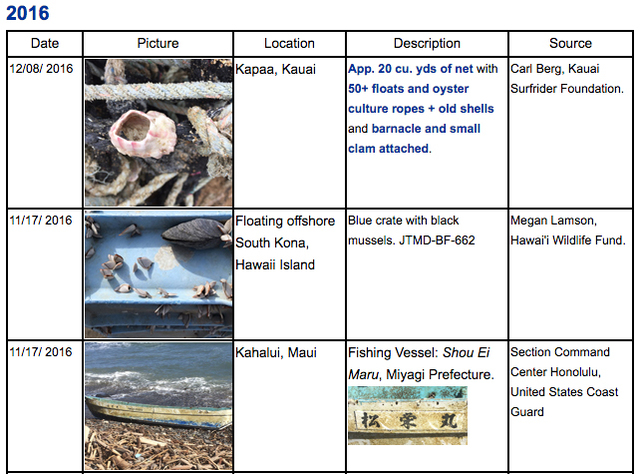Nearly six years after the earthquake and tsunami event that devastated Fukushima, Japan, debris continues to wash up on Hawaiian beaches. ADVERTISING Nearly six years after the earthquake and tsunami event that devastated Fukushima, Japan, debris continues to wash up
Nearly six years after the earthquake and tsunami event that devastated Fukushima, Japan, debris continues to wash up on Hawaiian beaches.
It’s expected to continue doing so well into the future.
“It’s hard to tell (how long) because this is kind of a unique experience,” said Nikolai Maximenko, a senior researcher at the University of Hawaii at Manoa’s International Pacific Research Center. “Looking at trends … it will continue for at least a decade.”
Maximenko and his colleagues model ocean currents to predict how and when tsunami debris will arrive. They are constantly tweaking the model to take into account current observations and findings.
It’s difficult to trace exactly what marine debris is from the tsunami, so researchers focus on a few main categories. The easiest to track are Japanese boats.
“We can track them back,” Maximenko said. “They’re interesting for people, so people do report them, and they’re built to survive in the ocean, so when they come, they’re in good condition.”
One such boat was spotted off Kona in January, he said.
Other times, items are identified because they have the names of cities affected by the tsunami on them.
The IPRC catalogs tsunami-related debris on its website and will soon expand to cataloging marine debris in general.
The center also is working in collaboration with NASA to develop remote sensors in satellites that would track marine debris.
On the web:
To view the IPRC tsunami debris catalog, visit http://bit.ly/2kev5S1




